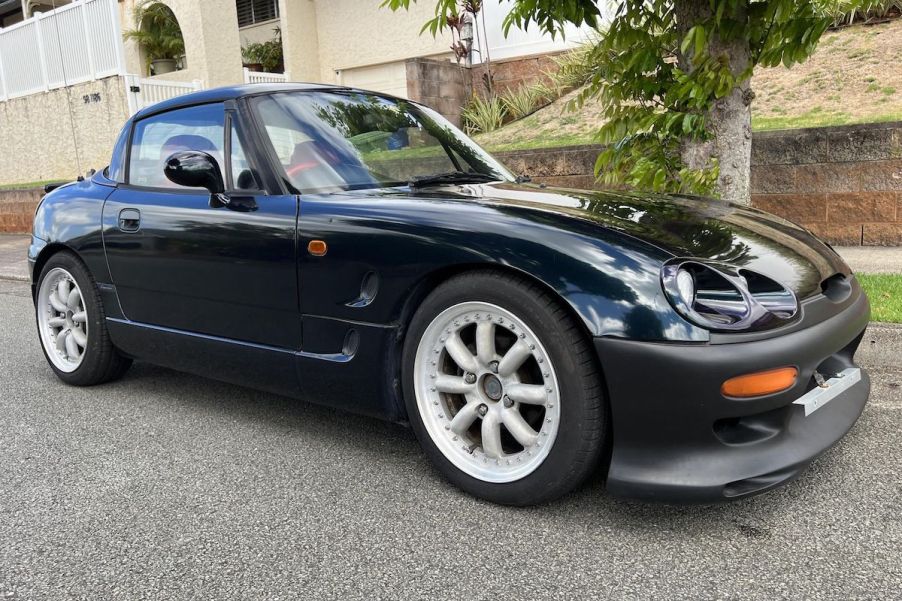
The Lack of 1 Feature Made the Suzuki Cappuccino Dangerous but a Delight to Drive
The Suzuki Cappuccino was a Japanese Kei car that emphasized sporty performance. Even though it featured tiny dimensions and a 657cc engine, the Cappuccino was a hoot to drive, owing to its lightweight and performance hardware. But this sporty Kei car could also be dangerous to drive. Let’s explore the history of the Suzuki Cappuccino and why it fell short on safety.
History of the Suzuki Cappuccino
In Japan, Kei cars are the smallest street-legal vehicles available. Designed for tight roads and crowded cities, Kei cars use their compact size to weave through confining spaces. And though the government limits engine size to 660cc, with their lightweight, these go-kart-like vehicles can be a hoot to drive.
In their detailed history of the Cappuccino, Drifted.com describes how Suzuki sought to rejuvenate its sporting image in the late 80s. To that end, the company introduced the Cappuccino concept in 1989 which featured sports car styling, tiny size, and performance components. This Japanese Kei car’s selling point was fun.
Suzuki produced the Cappuccino from 1991-1998, and it built up a following due to its unique design and lively performance. To this day, it’s an amusing ride.
Suzuki Cappuccino: Fun yet unsafe
For a sports car, lightweight is an indispensable attribute. A lower curb weight helps handling, acceleration, and braking, giving the tires, engine, and brakes less work to do. And the Cappuccino was among the lightest on the road.
The Suzuki Cappuccino was only 129.7 inches long, 54.92 inches wide, and weighed 1,598 lbs.
That translated into a quick, agile driving experience, where the Cappuccino’s size made it a go-kart for the streets. Auto Express lauded the Suzuki’s handling on twisty roads. And a removable top only added to the fun.
But the same attributes that made it great to drive also compromised safety.
Although a compact, light design works wonders in the corners, it can have the opposite effect in a collision. And while today’s vehicles use reinforced safety structures, this sporty Kei car had barely anything to protect occupants.
Suzuki Cappuccino: Specs and Performance
The Cappuccino had an array of performance hardware that led to its racy performance. Autozine has all the specs.
Initial versions used a turbo 657cc DOHC three-cylinder with 64 hp and 63 lb-ft of torque. With an 8500 rpm redline, this miniature powerplant encouraged hard driving. And later models were even better, with more power and a lighter aluminum block.
0-60 arrives in 11.3 seconds. Top speed stands at 93 mph. But the Suzuki Cappuccino’s performance figures don’t tell the whole story. This Kei car is about driving thrills, making a daily errand feel like a lap at the track.
Beyond its engine, the Suzuki Cappuccino has real sports car credentials. Classic attributes like an available 5-speed manual, rear-wheel drive, and four-wheel disc brakes enhance driver involvement and handling. And an ideal 50/50 weight distribution gives it ideal balance in corners.
The Suzuki Cappuccino was an entertaining vehicle that, while loads of fun, fell short on safety. Still, with its uncommon design and specs, it’s a talked about vehicle to this day.



